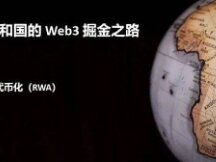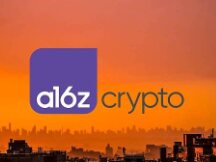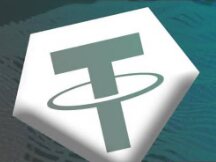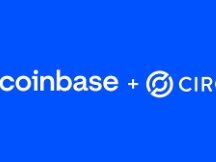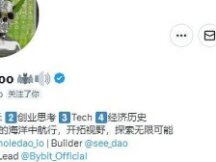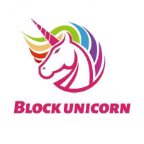Dragonfly Capital Partner: Blockchain is a multi-city and in the future there will be more chains.
Will we live in many worlds or will there be a "chain that controls everything"? It depends on the brain structure of the blockchain.
People often describe L1 blockchains as networks (e.g. Ethereum network, Solana network). This means that the blockchain can measure vulnerabilities such as the Internet, Telegram or Facebook. If a blockchain is a network, the effects in the network are strong and a blockchain wins.

However, the network is a false example of a weak blockchain. The blockchain cannot be measured to the final block because it requires a lot of small independent users.
Smart promises like the city. Adopting this psychological model makes the energy around the L1 blockchain extremely sensitive.
Everyone loves to complain about Ethereum.
Get off It's crowded, slow, long overdue, nothing works and doesn't seem to be improving. It was so expensive that only the wealthy could do business there.
Ethereum Is New York.

New York
Of course, it's in New York that it's happening! It has all the biggest banks, billionaires, most famous and famous people. Likewise, Ethereum has the largest DeFi protocol, the most popular TVLs, and the most popular DAOs and NFTs.
But if the price goes up and the star goes up, the price will go down. Buying faster can make you richer. But nowadays they are so expensive that there is not enough space for everyone. Billionaires may be good, but the next generation will have to look elsewhere.
So how do you expand New York?
Three ways to expand your city:
Route #1: Construction, terrain may be restricted but still vertical. By building a higher town, you can increase the number of people in the same area.

However, buildings are not the complete answer, there are limits to the height of skyscrapers, and even skyscrapers cannot avoid the collision of the city below. If I live on the top floor in Manhattan and you live in another high building, if I have to go downstairs to meet you and call an expensive taxi and fight the accident in Manhattan, we easily eliminate the restrictions - Manhattan is crowded.
L2 and Rollup are blockchain equivalents of skyscrapers. Each rollup is like a vertical blockchain connected by a terrestrial L1. There are a lot of pieces in the rollup! However, to access a collection of other people, you need to leave ethereum below and manage traffic below.

Increasing improvements will help bring more people to the city, but that's not the answer. If Ethereum is crowded now, it will be crowded after rollup (billionaires can be in L1 and pay). So, what is the scale of the blockchain?
Route #2: A "collaborative strategy" like Polkadot or Cosmos. Polkadot and Cosmos provide SDKs to help developers publish application-specific blockchains, which are small blockchains per application. All these blockchains are connected to the Cosmos Hub of the Cosmos, the chain of Polkadot, the system.
In the city for example, it seems to create a connection of small towns doing the same thing. There's a mining town, there's a lot of factories, then there's a rural village, then there's a shopping village. Each of them is connected to an extensive network of highways.

Factory Village in Xincheng
It works. Some places will be designed for this. Industrial cities and rural villages are one, but they are not the most important part of human life and industry. A few more small towns are needed to absorb the crowds.
Route #3: The last step to expand your city: Build another city. This was followed by Solana, Avalanche and NEAR.
When building a new city, you must first post a variety of construction projects. It looks like a duplicate. Each new town needs a different route, different police stations, schools and hospitals. Likewise, each new L1 will need another research block, another fiat ramp, a native AMM and an NFT industry. It's redundant, but all L1s need this root to boot.
But the best thing about building a new city is that it can be designed differently from city to city.
Let's take Solana as an example. Solana is from Los Angeles. It's bigger, bigger and cheaper than Manhattan. Become a starving actor and leave LA! Ignore East Coast thinking with decentralization. Move your app to Solana, run NFT, and be done in less than 10 minutes.

Manhattan
Of course, Solana isn't the most decentralized. But games and NFTs don't need a lot of distribution in the first place. The weather is nice, the prices are low and nobody takes them very seriously.
So what is an avalanche? I think the Avalanche is Chicago. It's trying to be the next Wall Street, but it's newer, cheaper, and heavier. It was cool there, but Avalanche's expertise in finance and economics made the city vibrant and confident and it's not easy to bet on the bullseye.

Chicago
NEAR is designed for San Francisco - web3 professionals. The perfect city for those who want to realize their Ethereum 3.0 dream. From their perspective, sharding is the only long-term way forward.

San Francisco
The importance of this city is that it is not only big and open for business, but everyone has a different view of what the city should be and how it should be run. All cater to different trade needs, receive special benefits, and apply for different markets.
So, will we live in a more chained world, or will there be a “chain that rules everything”? It is a question of reconstruction. Will we live in multiple cities around the world, or will there be one city that rules them all?

The answer is yes. There is a legal effect (Matthew effect) on the distribution of urban dominance, but there are many important cities and there are no similarities. However, I find this psychiatric model useful in predicting how L1 will mutate.
Here are six things this model predicts.
1. The future will have more channels.
2. To quote a famous bank robber, Ethereum is probably the most important chain. The money is there.
3. Other L1s are also required, but will continue. New York, Los Angeles, Chicago, and Houston are permanent cities due to their unique homes and cultures.
4. The L2 is important. Skyscraper technology is important for expanding your city, but that's not the end of the story. L2 is "and", not "or".
5. Blockchain per application will remain a niche market.
6. In the real world, transport accounts for nearly half of GDP. If you find something similar in cryptocurrency, crossing the link chain can be very valuable.

Scan QR code with WeChat
